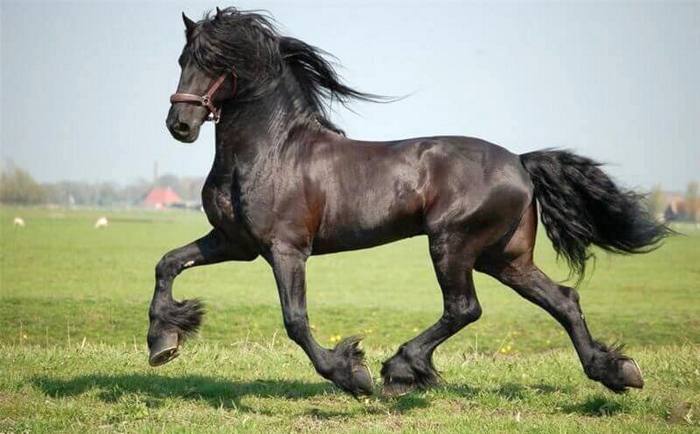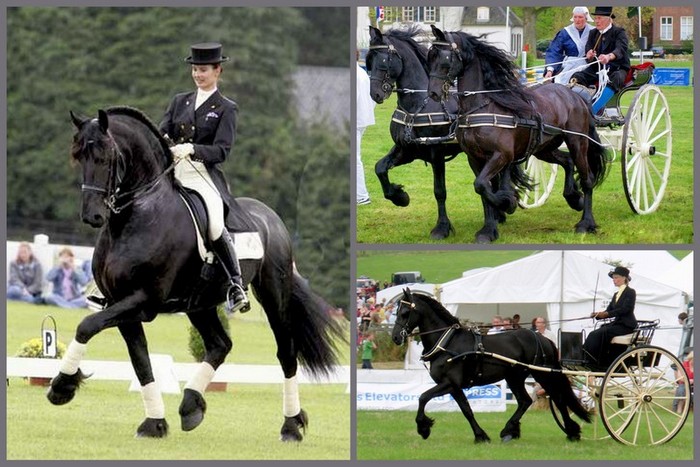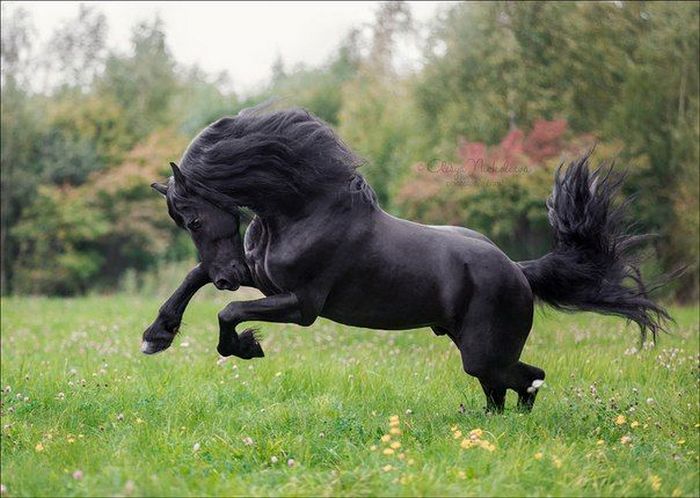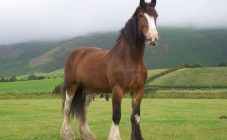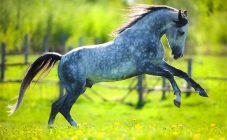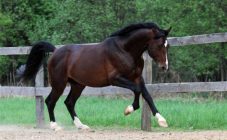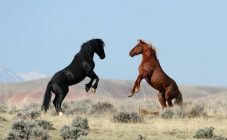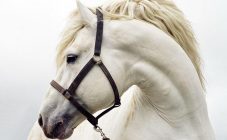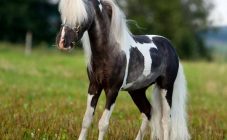Content:
"Black Pearl" - this name was given to one of the most expensive horse breeds in the world - Friesian. Despite the fact that it is quite costly to maintain, the popularity of this breed in the world is only growing, although earlier it was famous mainly on the American continent.
Now these pedigree and incredibly beautiful animals are being reborn, despite the fact that they were on the verge of extinction before.
The history of the creation and development of the breed
The Friesian horse breed has a thousand-year history. It is a native Dutch breed. Comes from the region of Frisia (Kingdom of the Netherlands). The first mentions of her in historical chronicles show that she had little resemblance in appearance to modern Frisians.
In those days, these were unsightly heavyweights that were used in agriculture and on the fields of European battles. But over time, in connection with the development of military technology and weapons in Europe, a need arose for completely different horses - fast and hardy, which could carry their rider without much effort. At this time, the history of modern Frisians begins, and other horse breeds in general.
In the age of military conquests, knightly tournaments and traveling carriages in Europe, there was a need for beautiful strong graceful horses. Frieze horse began its path to improvement and gradually took on the shape that has remained unchanged today. In the blood of these animals there are genes of hardy Arab breeds that came to Europe during the Crusades. The Friesian horse received a noble posture and dressage ability from the Andalusian and Barbary breeds.
When the era of kings and knightly tournaments sunk into oblivion, the need for graceful animals declined sharply, the peasants preferred strong, hardy and unpretentious heavyweights. These processes provoked a sharp decline in rocks like the Friesian, which is why it was on the verge of extinction. These animals survived only thanks to the efforts of horse breeders, who in 1879 created the Studbook of the Friesian horse.
However, the friezes still underwent changes in the exterior: they had a heavy body and short legs. But this also saved them for a short time. In the 60s. of the last century, these animals again began to experience a sharp decline in interest in themselves in the world, due to which the threat of degeneration arose again. And only the interest in equestrian sports, which developed rapidly in those years, saved the Frisians from extinction as a purebred breed. Today they are very popular athletes involved in many types of equestrian sports and have shown remarkable results.
Characteristic
Friesian horses are small, but proportionally built. The height at the withers reaches from 1.5 to 1.6 m. Their weight is 600 - 680 kg. The horse has a long neck, a strong back with a wide loin, which turns into a powerful croup. The head is small in size with expressive eyes.
The color is usually black. They are spectacular black horses, but there are also colors of wet asphalt and dark gray. A purebred Friesian horse, as a white individual, does not exist in nature. In the early 2000sLivestock breeders were excited by the appearance of a white frieze on the racetrack, but in the end it turned out that it was a special crossing of a frieze with an Arabian horse in an attempt to breed a completely new species.
Features of character and disposition
These horses stand out for their calm, balanced disposition. They quickly get used to the owner and are easy to train. They are so good-natured that they can be safely entrusted to roll the children, however, an energetic character hides behind the external poise. The Friesian stallion is a hardy animal capable of competing in equestrian sports that demand great returns.
But, despite the positive character traits, these horses are not distinguished by special intelligence. Therefore, often at prestigious competitions that require ingenuity from the animal, preference is given to other breeds of horses.
Maintenance and care
Frieze is quite unpretentious in maintenance, they are not sensitive to changes in climatic conditions, so it is easy to care for them, but at the same time, you need to take into account the peculiarities of their diet.
The main attention should be paid to the hairline of the friezes, taking into account some simple rules of care:
- after a walk or walk, it is imperative to clean the hair on the legs of the animal and clean the hooves;
- the thick mane and tail must be combed regularly, but if this is not possible, it is recommended to shorten it.
- it is worth regularly washing the tail and mane with special detergents;
- if tangles form in the hairline, they must be carefully cut off, but at the same time be extremely careful so as not to damage the horse's skin.
As the hooves grow, they need to be cleaned and lubricated; they grow especially quickly in foals. In older individuals, this process is somewhat slower.
The diet
The diet of the Friesians must be approached with all responsibility, since these animals need a large amount of protein, especially mares that carry or feed foals. If this component is not enough, it will lead to a lack of muscle mass. In addition, a diet with a high calcium content is important for animals, as it affects the fragility of bones, which can lead to injury.
A typical Frisian diet looks like this:
- whole grain oats;
- high quality hay;
- bran;
- raw carrots;
- salt;
- mineral supplements.
The modern range of friezes is quite wide today. These animals are used in almost all spheres: in agriculture, in sports competitions (mainly driving, dressage and triathlon), in circus art. At this time, breeding work is underway with an emphasis on the development of their sports characteristics.
The Dutch publicized this breed so much that it became their national treasure. Moreover, these horses have their own monument. However, today the fascination with the friezes has declined, and in private households they are usually kept for walking trips.
